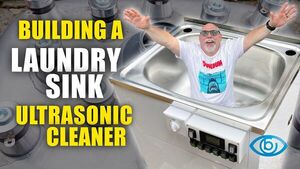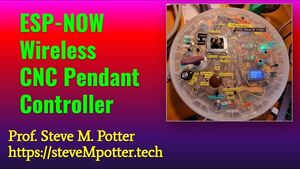2023-01-12 - Nº 402
Editorial
Esta é a Newsletter Nº 402 que se apresenta com o mesmo formato que as anteriores. Se gostar da Newsletter partilhe-a!
Todas as Newsletters encontram-se indexadas no link.
Esta Newsletter tem os seguintes tópicos:
Faz hoje anos que nascia, em 1580, o Filósofo, químico, e médico belga Jan Baptista van Helmont. Ele cunhou a palavra "gás" (via khaos grego, espaço vazio), do qual encontrou vários exemplos, a maioria dos quais é de dióxido de carbono natural. Como homem da sua idade, ele foi parte medievalista e parte cientista. Helmont foi o primeiro a reconhecer gases distintos do ar atmosférico. Ele determinou que o gás emitido pela queima do carvão vegetal é o mesmo que o emitido pela fermentação do sumo de uva. A isto deu o nome de spiritus silvestre ("espírito selvagem"); chamamos-lhe dióxido de carbono. Ele também identificou o sulfureto de hidrogénio proveniente do homem, e fez gás acis hidroclorídrico. Como médico e fisiologista, Helmont foi um dos primeiros a aplicar princípios químicos na saúde humana e na doença. Alguns chamam-lhe o "pai dabiochequímica". Ele foi interrogado pela Inquisição, e passou algum tempo em prisão domiciliária.
Faz também hoje anos que nascia, em 1716, o cientista e oficial naval espanhol Antonio de Ulloa. Ele descobriu o elemento platina (número atómico 78). Em 1735, os governos francês e espanhol enviaram uma expedição científica ao Peru e Equador para medir um grau de meridiano em Quinto, perto da linha do equador. Ulloa foi um dos oficiais nomeados para assumir o encargo da expedição. Em 1744, o navio em que regressou foi capturado pelos britânicos, e foi feito prisioneiro, embora tratado com respeito pelos oficiais navais ingleses, pois eles "não estavam em guerra com as artes e as ciências". O diário de bordo da sua viagem ao Peru, publicado em 1748, contém uma descrição da platina. Criou o primeiro museu de história natural e o primeiro laboratório metalúrgico em Espanha, assim como o observatório de Cádis.
Faz igualmente hoje anos que nascia, em 1792, o químico sueco Johan August Arfwedson. Ele descobriu lítio (relatado em 1818) num composto obtido a partir de petalite. Este mineral foi encontrado na mina de ferro de Uto, na Suécia. O componente alcalino, denominado lítio, era óxido de lítio. Arfwedson não conseguiu isolar o lítio como metal porque isso exigia electrólise com baterias mais fortes do que as que tinha disponíveis. (A separação acabou por ser feita por Humphry Davy.) Petalite é agora conhecida por ser silicato de lítio e alumínio. Posteriormente, descobriu também lítio em dois outros minerais, spodumene e lepidolite. Arfwedson abandonou o esforço científico para passar o seu tempo a gerir as fábricas e minas da sua família que ele herdou.
Faz também hoje anos que nascia, em 1822, o inventor belgo-francês Étienne Lenoir. Ele concebeu o primeiro motor de combustão interna do mundo com sucesso comercial. Mudou-se para Paris, onde o seu trabalho com galvanização o levou a outras invenções eléctricas, entre as quais um telégrafo ferroviário. Lenoir patenteou o seu primeiro motor em 1860. Parecendo-se muito com um motor a vapor de dupla acção, disparou uma carga de ar não comprimido e gás iluminante com um sistema de ignição da sua própria concepção. Um destes motores alimentava um veículo rodoviário em 1863; outro dirigia um barco. Devido a desenhos melhorados por Nikolaus Otto e outros inventores, o motor Lenoir tornou-se obsoleto e apenas cerca de 500 motores Lenoir foram construídos. O motor Lenoir não era suficientemente eficiente, e o inventor morreu pobre.
Faz igualmente hoje anos que nascia, em 1853, o matemático italiano Gregorio Ricci-Curbastro. Ele foi instrumental no desenvolvimento do cálculo diferencial absoluto (também chamado cálculo Ricci), agora conhecido como análise tensorial. O trabalho inicial de Ricci-Curbastro foi em física matemática, particularmente sobre as leis dos circuitos eléctricos e equações diferenciais. Ele mudou um pouco de área para empreender investigação em geometria diferencial e foi o inventor do cálculo diferencial absoluto entre 1884 e 1894. O cálculo diferencial absoluto de Ricci-Curbastro tornou-se o fundamento da análise tensorial e foi utilizado por Einstein na sua teoria da relatividade geral.
Faz também hoje anos que nascia, em 1903, o físico nuclear soviético Igor Kurchatov. Ele conduziu investigação científica nuclear na União Soviética, durante a qual a sua equipa construiu um ciclotrão, um acelerador de prótons e estudou a radioactividade artificial e as interacções neutrões-protões. Durante a II Guerra Mundial, foi escolhido como director para o desenvolvimento da primeira bomba atómica do seu país, detonada a 29 de Agosto de 1949. Entretanto, em Dezembro de 1946, Kurchatov demonstrou um reactor protótipo em funcionamento, embora limitado a produzir apenas alguns watts e, em Junho de 1948, um reactor de produção de plutónio. Em poucos anos, ele produziu a primeira bomba termonuclear prática do mundo (1952). Antes de 1978, o nome soviético para o elemento-104 era kurchatovium (Ku), embora posteriormente o rutherfordium (Rf) se tenha tornado o nome aceite.
Faz igualmente hoje anos que nascia, em 1907, o engenheiro de foguetes soviético Sergei Korolev. Ele concebeu mísseis guiados, foguetes e naves espaciais. Foi um dos fundadores do Grupo de Moscovo para o Estudo do Movimento Reactivo. Em 1933, participou no primeiro lançamento de um foguetão propulsor líquido da União Soviética. Como não era membro do Partido Comunista, passou grande parte da sua vida sob prisão domiciliária. Após demonstrar a sua perícia na modificação dos foguetes V2 capturados, Korolev dirigiu o projecto, testes, construção e lançamento da nave espacial Vostok, e a maioria dos outros projectos da R.E.U. Por volta de 1958, Korolev defendeu a perseguição de voos espaciais tripulados em vez de satélites de reconhecimento militar. Após muito debate, o projecto Vostok foi aprovado desde que o veículo de lançamento também pudesse ser útil para os militares.
Por fim, faz hoje anos que nascia, em 1934, o inventor e empresário norte-americano James Fergason. Ele é mais conhecido pelo seu trabalho sobre um ecrã de cristais líquidos melhorado, ou LCD. Detinha mais de uma centena de patentes americanas na altura da sua morte.
E nesta semana que passou foi lançada a nova família de câmaras para o Raspberry PI. São quatro as variantes diferentes do Módulo 3 da Câmara, a começar pelo preço de 25 dólares. Os Módulos de Câmara têm opções sensíveis à luz visível e infravermelhos, e com um campo de visão padrão ou largo (FoV). E em vez da óptica de focagem fixa dos seus antecessores, o Módulo de Câmara 3 fornece focagem automática motorizada - permitindo tirar imagens nítidas de objectos desde cerca de 5cm até ao infinito.
Na Newsletter desta semana apresentamos diversas noticias, artigos científicos, projetos de maker e alguns vídeos interessantes. É apresentado o livro "Computational Imaging Book".
 João Alves ([email protected])
João Alves ([email protected])
O conteúdo da Newsletter encontra-se sob a licença  Creative Commons Attribution-NonCommercial-ShareAlike 4.0 International License.
Creative Commons Attribution-NonCommercial-ShareAlike 4.0 International License.
Novidades da Semana

New autofocus camera modules!
"Today, we’re happy to announce the launch of Raspberry Pi Camera Module 3. Four different variants of Camera Module 3, in fact, starting at the familiar price of $25. We’ve produced Camera Modules with both visible-light and infrared-sensitive options, and with either a standard or wide field of view (FoV). And in place of the fixed-focus optics of its predecessors, Camera Module 3 provides powered autofocus — which many of you have requested — allowing you to take crisp images of objects from around 5cm out to infinity. There’s a video demo further down the page. Once again, we’ve partnered with Sony, this time using their back-illuminated IMX708 sensor: this offers higher resolution (twelve megapixels); a larger and more sensitive pixel design; and support for high-dynamic-range imaging." [...]
Outras Notícias

NASA’s TESS Discovers Planetary System’s Second Earth-Size World
"The newly discovered planet and its Earth-size sibling are both in the habitable zone, where liquid water could potentially exist on their surfaces. Using data from NASA’s Transiting Exoplanet Survey Satellite, scientists have identified an Earth-size world, called TOI 700 e, orbiting within the habitable zone of its star – the range of distances where liquid water could occur on a planet’s surface. The world is 95% Earth’s size and likely rocky. Astronomers previously discovered three planets in this system, called TOI 700 b, c, and d. Planet d also orbits in the habitable zone. But scientists needed an additional year of TESS observations to discover TOI 700 e. “This is one of only a few systems with multiple, small, habitable-zone planets that we know of,” said Emily Gilbert, a postdoctoral fellow at NASA’s Jet Propulsion Laboratory in Southern California who led the work. “That makes the TOI 700 system an exciting prospect for additional follow-up." [...]

The Greenest Generation: NVIDIA, Intel and Partners Supercharge AI Computing Efficiency
"AI is at the heart of humanity’s most transformative innovations — from developing COVID vaccines at unprecedented speeds and diagnosing cancer to powering autonomous vehicles and understanding climate change. Virtually every industry will benefit from adopting AI, but the technology has become more resource intensive as neural networks have increased in complexity. To avoid placing unsustainable demands on electricity generation to run this computing infrastructure, the underlying technology must be as efficient as possible. Accelerated computing powered by NVIDIA GPUs and the NVIDIA AI platform offer the efficiency that enables data centers to sustainably drive the next generation of breakthroughs. And now, timed with the launch of 4th Gen Intel Xeon Scalable processors, NVIDIA and its partners have kicked off a new generation of accelerated computing systems that are built for energy-efficient AI. When combined with NVIDIA H100 Tensor Core GPUs, these systems can deliver dramatically higher performance, greater scale and higher efficiency than the prior generation, providing more computation and problem-solving per watt." [...]

4th Gen Intel Xeon Scalable Processors
"Intel showcases 4th Gen Intel Xeon Scalable processors, Intel Xeon CPU Max Series and Intel Data Center GPU Max Series. Intel unveils its 4th Gen Intel® Xeon® Scalable processors, Intel® Xeon® CPU Max Series and Intel® Data Center GPU Max Series. Built to take on and solve computing challenges at scale, Intel’s strategy aligns CPU cores with built-in accelerators optimized for specific workloads and delivers increased performance at higher efficiency for optimal total cost of ownership. The 4th Gen Intel Xeon Scalable processors are Intel’s most sustainable data center processors ever, delivering a range of features for managing power and performance, making the best use of CPU resources to achieve key sustainability goals. In addition, the Xeon CPU Max and the Max Series GPU add high-bandwidth memory and maximum compute density to solve the world’s most challenging problems faster. Join the Accelerate with Xeon launch celebration – happening at 10 a.m. PST, Jan. 10 – for 4th Gen Intel Xeon Scalable processors, Intel Xeon CPU Max Series, and Intel Data Center GPU Max Series for high performance computing (HPC) and AI." [...]

STMicroelectronics brings 32-bit kick to cost-sensitive 8-bit applications with STM32C0 series microcontrollers
"Most affordable entry to STM32 family now in high-volume production and available for shipment, covered by ST’s 10-year longevity program STMicroelectronics (NYSE: STM), a global semiconductor leader serving customers across the spectrum of electronics applications, is again broadening access to its STM32 microcontroller (MCU) family by introducing the most affordable series yet: the STM32C0. STM32 MCUs are used in billions of smart industrial, medical, and consumer products worldwide. With thousands of existing STM32 part numbers, product designers can select the features and performance they need at a price to suit their market. In assuring availability, ST targets the new STM32C0 series to equipment like home appliances, industrial pumps, fans, smoke detectors, typically served by simpler 8-bit and 16-bit MCUs. The modern, 32-bit design of the STM32C0 permits improvements such as faster response, extra functions, and network connection at similar overall cost and power consumption. At the same time, its entry-level simplicity and free and extensive support ecosystem with resources including tools, software packs, and the chance to connect with various developer communities ease entry to the 32-bit world for new users." [...]

Renesas Introduces Low-Power RL78/G15 MCU with the Smallest 8-pin Package Option Available within the RL78 Family
"Lower-pin Package Device Further Expands the RL78 Family with More Device Selection Renesas Electronics Corporation (TSE: 6723), a premier supplier of advanced semiconductor solutions, today introduced a new general-purpose microcontroller (MCU) in the low-power RL78 Family, with small package sizes that target 8-bit MCU applications. The versatile RL78/G15 packs many peripheral functions and 4-8KB of code flash memory in package sizes ranging from 8 to 20 pins, with the smallest 8-pin device measuring only 3 x 3 mm. These features are designed to keep system size small and reduce the cost of end systems, such as industrial, consumer, sensor control, lighting, and inverter applications. In addition, the maximum operating ambient temperature of 125°C facilitates optimal thermal design, covering a wide temperature range and allowing the MCU to be used near heat-generating components such as inverter motors. “The RL78 family is known for its excellent power efficiency and optimized peripheral functions,” said Toshihiko Seki, Vice President of Renesas' MCU Device Solution Business Division. “To date, we have shipped over 7.1 billion units in the 11 years since its release, and we are currently shipping 100 million units per month." [...]

NASA’s Lunar Flashlight Team Assessing Spacecraft’s Propulsion System
"The mission is characterizing its new “green” propulsion system and developing a modified plan for the briefcase-size satellite’s journey to the Moon. NASA’s Lunar Flashlight mission successfully launched on Dec. 11, 2022, to begin its four-month journey to the Moon, where the small satellite, or SmallSat, will test several new technologies with a goal of looking for hidden surface ice at the lunar South Pole. While the SmallSat is largely healthy and communicating with NASA’s Deep Space Network, the mission operations team has discovered that three of its four thrusters are underperforming. The mission team, which first observed the reduced thrust three days after launch, is working to analyze the issue and provide possible solutions. During its cruise, Lunar Flashlight’s propulsion system has operated for short-duration pulses of up to a couple seconds at a time. Based on ground testing, the team thinks that the underperformance might be caused by obstructions in the fuel lines that may be limiting the propellant flow to the thrusters." [...]

STPOWER automotive-grade devices from STMicroelectronics run cooler in surface-mount ACEPACK SMIT package
"STMicroelectronics has introduced five power-semiconductor bridges in popular configurations, housed in ST’s advanced ACEPACK™ SMIT package that eases assembly and enhances power density over conventional TO-style packages. Engineers can choose from two STPOWER 650V MOSFET half bridges, a 600V ultrafast diode bridge, a 1200V half-controlled full-wave rectifier, and a 1200V thyristor-controlled bridge leg. All devices meet automotive-industry requirements and are suitable for electric vehicle on-board chargers (OBC) and DC/DC converters, as well as industrial power conversion. ST’s ACEPACK SMIT surface mounted package delivers the easy handling of an insulated package with the thermal efficiency of an exposed drain. It allows direct-bonded copper (DBC) die attachment for efficient top-side cooling. The 4.6 cm2 exposed metal topside of the ACEPACK SMIT permits easy attachment of a planar heatsink." [...]

Micron DDR5 Delivers Increased Performance and Reliability for the 4th Gen Intel® Xeon® Scalable Processor Family
"Micron DDR5 improves workloads across the data center today while enabling future infrastructure growth Micron Technology, Inc. (Nasdaq: MU), today announced that its DDR5 server memory portfolio for the data center is now fully validated on the 4th Gen Intel Xeon Scalable processor family. Micron DDR5 memory delivers up to twice the memory bandwidth over previous generations, which is essential to fueling the rapid growth of cores in today’s data center processors. Transitioning to DDR5 will help alleviate a potential bottleneck for years to come by providing higher bandwidth to unlock more computer power per processor. Micron DDR5, in combination with 4th Gen Intel Xeon Scalable processors, benefits a wide range of workloads including SPECjbb, which delivers up to 49% performance improvement on benchmarking for Critical-jOPS (Java operations per second) compared to previous generations.1 In addition to increased memory bandwidth and performance, Micron DDR5 memory is also designed to improve reliability across the data center with features such as on-die Error Correction Code (ODECC) and bounded faults. On-die ECC corrects single-bit errors and detects multi-bit errors. “The deep collaboration we have established with Intel as a highly valued ecosystem partner, has allowed Micron to remain at the forefront of the industry transition to DDR5,” said Raj Hazra, senior vice president and general manager of Micron’s Compute and Networking Business Unit." [...]

Samsung Electronics Unveils High-Performance PC SSD That Raises Everyday Computing and Gaming to a New Level
"Built with a market-leading 5nm controller and seventh-generation V-NAND, the PM9C1a will enable a new level of everyday PC efficiency while also handling demanding computing and gaming tasks Samsung Electronics today announced production readiness of a high-performance PCIe 4.0 NVMe SSD, the PM9C1a. Integrated with a new controller based on Samsung’s cutting-edge 5-nanometer (nm) process and the company’s seventh-generation V-NAND technology, the PM9C1a will provide elevated computing and gaming performance in PCs and laptops. “Our new PM9C1a SSD will deliver a robust combination of superior performance, greater power efficiency and increased security, which are the qualities that matter most to PC users,” said Yong Ho Song, Executive Vice President of Memory Solution Product & Development at Samsung Electronics. “We are committed to creating storage that satisfies the diverse and changing market requirements as we continue to advance innovation in the PC SSD space.” With top-tier speeds, the PM9C1a SSD is ideal for everyday use as well as for more demanding computing and gaming applications. Leveraging the PCIe 4.0 interface, Samsung’s PM9C1a boasts a 1.6x faster sequential read speed and a 1.8x faster sequential write speed than its previous storage offering (PM9B1), reaching 6,000 megabytes per second (MB/s) and 5,600MB/s, respectively. Additionally, random read and write speeds can support up to 900K input/output operations per second (IOPS) and 1,000K IOPS, respectively." [...]
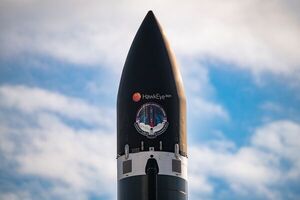
Rocket Lab Sets New Date for First Electron Launch From U.S. Soil
"Rocket Lab USA, Inc (Nasdaq: RKLB) (“Rocket Lab”), a leading launch and space systems company, has today announced the launch window for its first Electron mission from U.S. soil is scheduled to open on January 23, 2023 with back-up dates extending through early February. The daily launch opportunity runs from 6:00 pm – 8:00 pm EST (23:00 – 1:00 UTC). The “Virginia Is For Launch Lovers” mission will lift-off from Launch Complex 2 at Virginia Space’s Mid-Atlantic Regional Spaceport within NASA’s Wallops Flight Facility – a launch pad developed to support Electron missions from U.S. soil for government and commercial customers. The launch was originally scheduled to launch in December 2022 but was adjusted to January due to unfavorable weather conditions after NASA Wallops and the Federal Aviation Administration (FAA) required additional time to complete essential regulatory documentation for launch compressed the available launch window in December. With the necessary licenses and approvals now secured, Rocket Lab is moving into launch operations and is currently targeting the first day of the window for launch, pending weather suitability. The “Virginia Is For Launch Lovers” mission will deploy three satellites for radio frequency geospatial analytics provider HawkEye 360." [...]
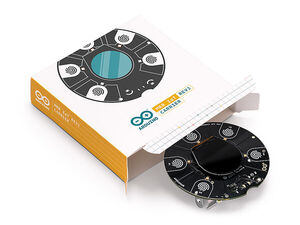
Introducing the new MKR IoT Carrier Rev2: Time to start your next IoT project
"If you’re looking for an ever faster, smoother, and more rewarding way to build your own IoT projects at home, the new MKR IoT Carrier Rev2 could be perfect for you. The new carrier can work with any board from the MKR family, giving you a wide choice of connectivity options to match the needs of your next IoT project. The MKR IoT Carrier Rev2 doesn’t require any additional components to get started, and you can create impressive and complete hassle-free projects this way. What does the carrier include? You’ll get all the sensors and actuators you need to develop IoT projects and connect them to the internet, taking your home automation journey to the next level. Let’s take a quick look at what you can build with the MKR IoT Carrier Rev2 and any board from the MKR family." [...]

Deere & Co. will allow farmers to repair their own equipment
"The American Farm Bureau Federation and machinery manufacturer Deere & Co (DE.N) signed a memorandum of understanding on Sunday that ensures farmers have the right to repair their own farm equipment or go to an independent technician. As the agriculture sector accelerates its adoption of technology, the reliance on high-tech machinery such as GPS-guided combines and tractors has become more common-place. But equipment makers such as Deere have generally required customers to use their parts and service divisions for repairs and until recently, only allowed authorized dealers the means and tools to access the complex computerized systems of their tractors and other machinery. The Farm Bureau's memorandum of understanding with Deere "will ensure farmers everywhere are able to repair our own equipment," Farm Bureau president Zippy Duvall said, speaking at the federation's convention in Puerto Rico. "This will enable you and your independent mechanics to identify and fix problems," he said. "You will have access to the diagnostic tools and information you need." [...]

Historic UK Mission Reaches Space, Falls Short of Orbit
"The historic first attempt to launch satellites from British soil reached space late last night, but ultimately fell short of reaching its target orbit. After successfully taking off from the runway at Spaceport Cornwall – which just a few weeks ago was transformed from a mere slab of empty cement at a commercial airport to the world’s newest space launch operations center – and travelling to the designated drop zone, Cosmic Girl, the customized 747 that serves as the LauncherOne system’s carrier aircraft, successfully released the rocket. The rocket then ignited its engines, quickly going hypersonic and successfully reaching space. The flight then continued through successful stage separation and ignition of the second stage. However, at some point during the firing of the rocket’s second stage engine and with the rocket travelling at a speed of more than 11,000 miles per hour, the system experienced an anomaly, ending the mission prematurely. Though the mission did not achieve its final orbit, by reaching space and achieving numerous significant first-time achievements, it represents an important step forward." [...]

Espressif Reveals ESP32-P4: A High-Performance MCU with Numerous IO-Connectivity and Security Features
"Espressif Systems (SSE: 688018.SH) today announces the upcoming release of its latest SoC, ESP32-P4. It is powered by a dual-core RISC-V CPU with an AI instructions extension, an advanced memory subsystem, and integrated high-speed peripherals. ESP32-P4 is designed for high-performance applications that require strong security. In fact, ESP32-P4 aims to cater to the next era of embedded applications which will rely on solid support for rich Human-Machine Interfaces, efficient edge computing, and increased IO-connectivity requirements. High-Performance CPU and Memory Subsystem Powered by a dual-core RISC-V CPU running up to 400MHz, ESP32-P4 also supports single-precision FPU and AI extensions, thus providing all the necessary computational resources. In addition, ESP32-P4 integrates an LP-Core which can run up to 40MHz." [...]
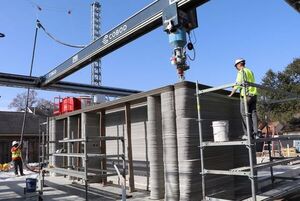
3D printing reaches new heights with two-story home
"A 3D printer is taking home building to a new level — literally. The enormous printer weighing more than 12 tons is creating what is believed to be the first 3D-printed, two-story home in the United States. The machine steadily hums away as it extrudes layers of concrete to build the 4,000-square-foot home in Houston. Construction will take a total of 330 hours of printing, said architect Leslie Lok, co-founder of design studio Hannah and designer of the home. “You can actually find a lot of 3D-printed buildings in many states,” Lok said. “One of the things about printing a second story is you require, you know, the machine…And of course, there are other challenges: structural challenges, logistic challenges when we print a second-story building."" [...]
Ciência e Tecnologia
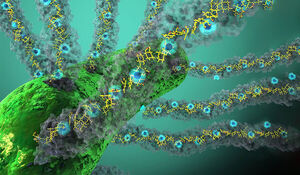
Light Accelerates Conductivity in Nature's 'Electric Grid'
"The natural world possesses its own intrinsic electrical grid composed of a global web of tiny bacteria-generated nanowires in the soil and oceans that “breathe” by exhaling excess electrons. In a new study, Yale University researchers discovered that light is a surprising ally in fostering this electronic activity within biofilm bacteria. Exposing bacteria-produced nanowires to light, they found, yielded up to a 100-fold increase in electrical conductivity. The findings were published Sept. 7 in the journal Nature Communications. “The dramatic current increases in nanowires exposed to light show a stable and robust photocurrent that persists for hours,” said senior author Nikhil Malvankar, associate professor of Molecular Biophysics and Biochemistry (MBB) at Yale’s Microbial Sciences Institute on Yale’s West Campus. The results could provide new insights as scientists pursue ways to exploit this hidden electrical current for a variety of purposes, from eliminating biohazard waste to creating new renewable fuel sources." [...]
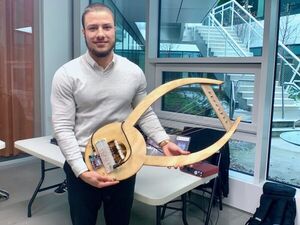
Making engineering sound fantastic
"Student instruments perform at Engineering the Acoustical World Festival Music and sound echoed throughout the lowest atrium of the Science and Engineering Complex at the Harvard John A. Paulson School of Engineering and Applied Sciences (SEAS). The staccato notes of guitars and lyres interspersed with percussive beats, undercut every few seconds by the warbling tones of a bent saw or circulating water-filled glass. Computer screens managed synchronized light displays or played notes based on hand motions. “GENED1080: How Music Works: Engineering the Acoustical World” wrapped its Fall 2022 semester with its annual festival, as students combined all their physics and engineering lessons to create musical instruments or other music-related final projects. “It’s so nice to see the students’ creativity shine through,” said Robert J. Wood, Harry Lewis and Marlyn McGrath Professor of Engineering and Applied Sciences, who created and teaches the course." [...]
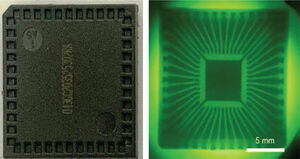
Organic X-ray excitement for innovative imaging
"Stable low-cost organic-based materials could transform X-ray imaging by improving fabrication methods and providing reliable high-resolution imaging results. Now, KAUST researchers have developed a novel approach for designing and building such high-performance scintillator materials for detecting X-rays at low doses. A scintillator is a material that, when hit by high-energy ionizing radiation such as X-rays, absorbs the energy and reemits some of it as low-energy visible light. Scintillators are widely used for X-ray imaging screens in multiple applications, from airport security scanners to medical radiography. However, most existing scintillators are made from ceramic or perovskite materials, which are often fabricated under harsh conditions and can be plagued with poor stability over time when exposed to light and air. “Organic-based scintillators have inherent advantages, such as low toxicity, high mechanical flexibility, low cost and straightforward large-scale production,” says KAUST postdoc Jian-Xin Wang, who worked on the project under the supervision of Omar Mohammed and co-workers." [...]

Engineering in harmony
"AeroAstro major and accomplished tuba player Frederick Ajisafe relishes the community he has found in the MIT Wind Ensemble. How does an ensemble play music together while apart? This was the question facing Frederick Ajisafe and the rest of the MIT Wind Ensemble (MITWE) at the start of the Covid-19 pandemic. One method was to individually record tracks that were later mixed together to sound like a full ensemble. “It was a strange experience,” says Ajisafe, who plays the tuba and is pursuing a double major in aerospace engineering and music. “It wasn’t as cohesive as playing together in person, but the results are something to be proud of.” Now that the group is able to rehearse in person once again, Ajisafe has a renewed appreciation for the community he has found within MITWE." [...]
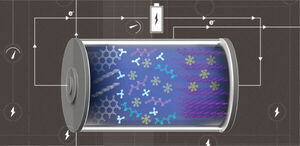
Metal-free batteries raise hope for more sustainable and economical grids
"Ammonium-ion electrolytes could help create ecofriendly and sustainable alternatives to lithium-ion batteries, particularly for grid storage. Rechargeable batteries that use ammonium cations as charge carriers could provide ecofriendly and sustainable substitutes to metal-ion-based batteries, researchers at KAUST show. Metal-ion batteries, such as lithium-ion batteries, are the go-to energy storage solution. They dominate the market for portable consumer electronics and electric vehicles because of their high energy density and versatility. However, metal ions used in the electrolytes come from limited and declining resources, which threatens long-term availability. Their toxicity and flammability can be unsafe and harmful to the environment." [...]

Unpacking the “black box” to build better AI models
"Stefanie Jegelka seeks to understand how machine-learning models behave, to help researchers build more robust models for applications in biology, computer vision, optimization, and more. When deep learning models are deployed in the real world, perhaps to detect financial fraud from credit card activity or identify cancer in medical images, they are often able to outperform humans. But what exactly are these deep learning models learning? Does a model trained to spot skin cancer in clinical images, for example, actually learn the colors and textures of cancerous tissue, or is it flagging some other features or patterns? These powerful machine-learning models are typically based on artificial neural networks that can have millions of nodes that process data to make predictions. Due to their complexity, researchers often call these models “black boxes” because even the scientists who build them don’t understand everything that is going on under the hood." [...]
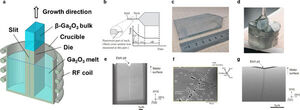
USTC Makes Progress in Ga2O3 Semiconductor Devices
"Recently, the 68th IEEE International Electron Devices Meeting (IEDM) was successfully held in San Francisco, USA. As a flagship conference for microelectronics and nanoelectronics, IEEE IEDM is the world's preeminent forum for reporting technological breakthroughs in semiconductor and electronic device technology, design, manufacturing, physics and modeling, the "Olympics" of integrated circuits and semiconductors. Two research papers on Ga2O3 devices by Prof. LONG Shibing's group from the University of Science and Technology of China (USTC) of the Chinese Academy of Sciences (CAS) were successfully accepted by the conference, which is the first time that USTC has published papers in IEEE IEDM as first author affiliation. 1. High-Performance Vertical β-Ga2O3 Schottky Barrier Diodes How to develop effective edge termination structures to mitigate the edge electric field of the Schottky electrodes is currently a heated topic. The construction of edge termination structure in P-N junction devices has been a challenging problem due to the currently unresolved Ga2O3 P-type doping technique." [...]
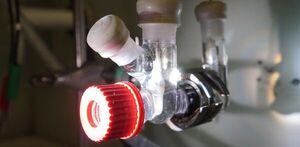
Solar-powered system converts plastic and greenhouse gases into sustainable fuels
"Researchers have developed a system that can transform plastic waste and greenhouse gases into sustainable fuels and other valuable products – using just the energy from the Sun. The researchers, from the University of Cambridge, developed the system, which can convert two waste streams into two chemical products at the same time – the first time this has been achieved in a solar-powered reactor. The reactor converts carbon dioxide (CO2) and plastics into different products that are useful in a range of industries. In tests, CO2 was converted into syngas, a key building block for sustainable liquid fuels, and plastic bottles were converted into glycolic acid, which is widely used in the cosmetics industry. The system can easily be tuned to produce different products by changing the type of catalyst used in the reactor. Converting plastics and greenhouse gases – two of the biggest threats facing the natural world – into useful and valuable products using solar energy is an important step in the transition to a more sustainable, circular economy." [...]

New spin control method brings billion-qubit quantum chips closer
"Discovery of previously unknown effect makes compact, ultra-fast control of spin qubits possible. UNSW Sydney engineers have discovered a new way of precisely controlling single electrons nestled in quantum dots that run logic gates. The new mechanism is also less bulky and requires fewer parts, which could prove essential to making large-scale silicon quantum computers a reality. The serendipitous discovery, made by engineers at the quantum computing start-up Diraq and UNSW, is detailed in the journal Nature Nanotechnology. “This was a completely new effect we’d never seen before, which we didn’t quite understand at first,” said lead author Dr Will Gilbert, a quantum processor engineer at Diraq, a UNSW spin-off company based at its Kensington campus. “But it quickly became clear that this was a powerful new way of controlling spins in a quantum dot." [...]
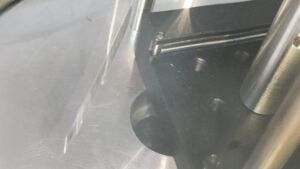
Researchers create an optical tractor beam that pulls macroscopic objects
"Expanding laser pulling beyond the microscopic scale could be useful for scientific and space applications Researchers have developed a way to use laser light to pull a macroscopic object. Although microscopic optical tractor beams have been demonstrated before, this is one of the first times that laser pulling has been used on larger objects. Light contains both energy and momentum that can be used for various types of optical manipulation such as levitation and rotation. Optical tweezers, for example, are commonly used scientific instruments that use laser light to hold and manipulate tiny objects such as atoms or cells. For the last ten years, scientists have been working on a new type of optical manipulation: using laser light to create an optical tractor beam that could pull objects. “In previous studies, the light pulling force was too small to pull a macroscopical object,” said research team member Lei Wang from QingDao University of Science and Technology in China." [...]
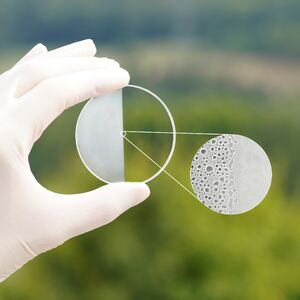
Optical coating approach prevents fogging and unwanted reflections
"Technology helps sensor and camera systems perform optimally by keeping optics transparent Researchers have developed an optical coating system that combines antifogging and antireflective properties. The new technology could help boost the performance of lidar systems and cameras. “Walking into a warm room from the cold outside can cause glasses to fog up, blinding the user,” said research team leader Anne Gärtner from Fraunhofer Institute for Applied Optics and Precision Engineering and Friedrich Schiller University Jena, both in Jena, Germany. “The same can happen to sensors such as the lidar systems used in autonomous cars. It is important that surfaces remain highly transparent, even if fogging occurs, so that functionality is maintained.” In the Optica Publishing Group journal Applied Optics, Gärtner and colleagues describe how they combined a polymer coating that prevents fogging with porous silicon dioxide nanostructures that reduce reflections. Although the coatings described in the paper were designed specifically for lidar systems, the technology can be tailored for many different applications." [...]

Using machine learning to forecast amine emissions
"Scientists at EPFL and Heriot-Watt University have developed a machine learning approach to accurately predict potentially harmful amine emissions from carbon-capturing plants. Global warming is partly due to the vast amount of carbon dioxide that we release, mostly from power generation and industrial processes, such as making steel and cement. For a while now, chemical engineers have been exploring carbon capture, a process that can separate carbon dioxide and store it in ways that keep it out of the atmosphere. This is done in dedicated carbon-capture plants, whose chemical process involves amines, compounds that are already used to capture carbon dioxide from natural gas processing and refining plants. Amines are also used in certain pharmaceuticals, epoxy resins, and dyes. The problem is that amines could also be potentially harmful to the environment as well as a health hazard, making it essential to mitigate their impact." [...]
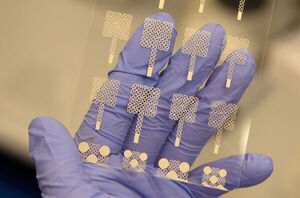
Screen-printing method can make wearable electronics less expensive
"The glittering, serpentine structures that power wearable electronics can be created with the same technology used to print rock concert t-shirts, new research shows. The study, led by Washington State University researchers, demonstrates that electrodes can be made using just screen printing, creating a stretchable, durable circuit pattern that can be transferred to fabric and worn directly on human skin. Such wearable electronics can be used for health monitoring in hospitals or at home. "We wanted to make flexible, wearable electronics in a way that is much easier, more convenient and lower cost," said corresponding author Jong-Hoon Kim, associate professor at the WSU Vancouver's School of Engineering and Computer Science. "That's why we focused on screen printing: it's easy to use. It has a simple setup, and it is suitable for mass production."" [...]
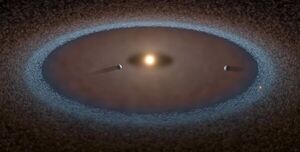
How Do Rocky Planets Really Form?
"Scientists unveil a unified theory for rocky planet formation A new theory for how rocky planets form could explain the origin of so-called "super-Earths"—a class of exoplanets a few times more massive than the Earth that are the most abundant type of planet in the galaxy. Further, it could explain why super-Earths within a single planetary system often wind up looking strangely similar in size, as though each system were only capable of producing a single kind of planet. "As our observations of exoplanets have grown over the past decade, it has become clear that the standard theory of planet formation needs to be revised, starting with the fundamentals. We need a theory that can simultaneously explain the formation of the terrestrial planets in our solar system as well as the origins of self-similar systems of super-Earths, many of which appear rocky in composition," says Caltech professor of planetary science Konstantin Batygin (MS '10, PhD '12), who collaborated with Alessandro Morbidelli of the Observatoire de la Côte d'Azur in France on the new theory. A paper explaining their work was published by Nature Astronomy on Jan. 12. Planetary systems begin their lifecycles as large spinning disks of gas and dust that consolidate over the course of a few million years or so." [...]

Turning abandoned mines into batteries
"A novel technique called Underground Gravity Energy Storage turns decommissioned mines into long-term energy storage solutions, thereby supporting the sustainable energy transition. Renewable energy sources are central to the energy transition toward a more sustainable future. However, as sources like sunshine and wind are inherently variable and inconsistent, finding ways to store energy in an accessible and efficient way is crucial. While there are many effective solutions for daily energy storage, the most common being batteries, a cost-effective long-term solution is still lacking. In a new IIASA-led study, an international team of researchers developed a novel way to store energy by transporting sand into abandoned underground mines. The new technique called Underground Gravity Energy Storage (UGES) proposes an effective long-term energy storage solution while also making use of now-defunct mining sites, which likely number in the millions globally." [...]
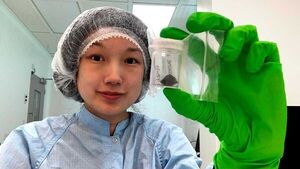
Building blocks of life found in meteorite which crashed landed in Gloucestershire
"New research has been published on the organic analysis of the Winchcombe meteorite which crashed landed onto a driveway in Winchcombe, Gloucestershire in 2021. The research, led by Dr Queenie Chan, from the Department of Earth Sciences at Royal Holloway, University of London, found organic compounds from space which holds the secrets to the origin of life. In the study, the analysis found a range of organic matter which reveals that the meteorite was once from part of an asteroid where liquid water occurred, and if it that asteroid had been given access to the water, a chemical reaction could have occurred leading to more molecules turning into amino acids and protein - the building blocks of life. The Winchcombe meteorite is a rare carbon rich chondritic meteorite (approximately four percent of all recovered meteorites, containing up to 3.5 weight percent of carbon) and is the first ever meteorite of this type to be found in the UK with an observed meteorite fall event, with more than 1,000 eyewitnesses and numerous footages of the fireball. The amino acid abundance of Winchcombe is ten times lower than other types of carbonaceous chondritic meteorites and was a challenge to study due to the limited detection of amino acids, but with the meteorite so promptly recovered and curated, the team were able to study the organic content of the meteorite prior to its interaction with the Earth’s environment. The organic matter suggests the meteorite could represent a class of unique, weak meteorite not previously studied." [...]
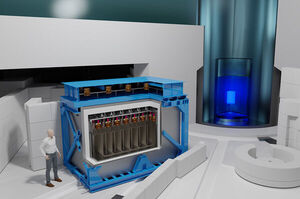
Nuclear reactor mystery solved, with no need for new particles
"One piece of evidence for weird sterile neutrinos evaporates A physics mystery has come to an end, with a resolution about as shocking as “the butler did it.” For a decade, physicists have pondered why nuclear reactors pump out fewer particles called neutrinos than predicted. Some suggested the elusive bits of matter might be morphing into weirder, undetectable “sterile” neutrinos. Instead, new results pin down what other experiments had suggested: that theorists overestimated how many neutrinos a reactor should produce. “This is not a surprising result, but it’s an important one,” says Georgia Karagiorgi, a particle physicist at Columbia University who was not involved in the work. “It’s still something that I wanted to see.” Neutrinos come in three types—electron, muon, and tau—depending on how they’re produced. Electron neutrinos pour from the Sun, muon neutrinos rain from the sky as cosmic rays strike the atmosphere, and tau neutrinos emerge in the decay of tau particles, which can be created with atom smashers." [...]

Integrated photonic circuits could help close the 'terahertz gap'
"EPFL researchers have collaborated with those at Harvard and ETH Zurich on a new thin-film circuit that, when connected to a laser beam, produces finely tailorable terahertz-frequency waves. The device opens up a world of potential applications in optics and telecommunications. Researchers led by Cristina Benea-Chelmus in the Laboratory of Hybrid Photonics (HYLAB) in EPFL’s School of Engineering have taken a big step toward successfully exploiting the so-called terahertz gap, which lies between about 300-30,000 gigahertz (0.3 to 30 THz) on the electromagnetic spectrum. This range is currently something of a technological dead zone, describing frequencies that are too fast for today’s electronics and telecommunications devices, but too slow for optics and imaging applications. Now, thanks to an extremely thin chip with an integrated photonic circuit made of lithium niobate, the HYLAB researchers and colleagues at ETH Zurich and Harvard University have succeeded not just in producing terahertz waves, but in engineering a solution for custom-tailoring their frequency, wavelength, amplitude, and phase. Such precise control over terahertz radiation means that it can now potentially be harnessed for next-generation applications in both the electronic and optical realms." [...]

Shift to ultraviolet-driven chemistry in planet-forming disks marks beginning of late-stage planet formation
"The chemistry of planet formation has fascinated researchers for decades because the chemical reservoir in protoplanetary discs—the dust and gas from which planets form—directly impacts planet composition and potential for life. New research from the University of Michigan Department of Astronomy suggests that chemistry in late-stage planet development is fueled by ultraviolet rays, rather than cosmic rays or X-rays, and this new understanding provides a chemical signature that helps researchers trace exoplanets back to their cosmic nurseries in the planet-forming disks. Jenny Calahan, a doctoral student in astronomy and first author of the paper, which appears in Nature Astronomy, said the discovery was part happy accident, part building on previous work. “It has been shown that there are bright, complex organic molecules present in the coldest and densest parts of planet-forming disks,” Calahan said. “This bright emission has been puzzling because we expect these molecules to be frozen out at these temperatures, not in the gas where we can observe them.” These molecules are emitting from regions that are minus-400 degrees Fahrenheit, and at these temperatures they’re thought to be frozen onto tiny solids that astronomers label as dust grains, or for the later mm-to-cm-sized solids as pebbles. These molecules should add to an icy coating on the grains, so they cannot be observed in the gas." [...]

Electrons Take New Shape Inside Unconventional Metal
"One of the biggest achievements of quantum physics was recasting our vision of the atom. Out was the early 1900s model of a solar system in miniature, in which electrons looped around a solid nucleus. Instead, quantum physics showed that electrons live a far more interesting life, meandering around the nucleus in clouds that look like tiny balloons. These balloons are known as atomic orbitals, and they come in all sorts of different shapes—perfectly round, two-lobed, clover-leaf-shaped. The number of lobes in the balloon signifies how much the electron spins about the nucleus. That’s all well and good for individual atoms, but when atoms come together to form something solid—like a chunk of metal, say—the outermost electrons in the atoms can link arms and lose sight of the nucleus they came from, forming many oversized balloons that span the whole chunk of metal." [...]

The optical fibre that keeps data safe even after being twisted or bent
"Physicists have created an optical fibre that uses the maths concept of topology to remain robust, thereby guaranteeing the high-speed transfer of information. Optical fibres are the backbone of our modern information networks. From long-range communication over the internet to high-speed information transfer within data centres and stock exchanges, optical fibre remains critical in our globalised world. Fibre networks are not, however, structurally perfect, and information transfer can be compromised when things go wrong. To address this problem, physicists at the University of Bath have developed a new kind of fibre designed to enhance the robustness of networks. This robustness could prove to be especially important in the coming age of quantum networks." [...]

New UCF-developed Battery Could Prevent Post-hurricane Electric Vehicle Fires
"The technology replaces the volatile and highly flammable organic solvents found in electric vehicle lithium-ion batteries with saltwater to create a safer and more efficient battery. A University of Central Florida researcher has developed technology that could prevent electric vehicle fires, like those caused by saltwater flooding from Hurricane Ian. The technology, an aqueous battery, replaces the volatile and highly flammable organic solvents found in electric vehicle lithium-ion batteries with saltwater to create a battery that is safer, faster charging, just as powerful and won't short circuit during flooding. The work is detailed in a new study in Nature Communications. "During Hurricane Ian, a lot of electric cars caught fire after they were soaked in floodwater," says Yang Yang, an associate professor in UCF's NanoScience Technology Center who led the research. "That is because the saltwater corrodes the battery and causes a short circuit, which ignites the flammable solvents and other components." [...]

Now on the molecular scale: electric motors
"Electric vehicles, powered by macroscopic electric motors, are increasingly prevalent on our streets and highways. These quiet and eco-friendly machines got their start nearly 200 years ago when physicists took the first tiny steps to bring electric motors into the world. Now a multidisciplinary team led by Northwestern University has made an electric motor you can't see with the naked eye: an electric motor on the molecular scale. This early work -- a motor that can convert electrical energy into unidirectional motion at the molecular level -- has implications for materials science and particularly medicine, where the electric molecular motor could team up with biomolecular motors in the human body. "We have taken molecular nanotechnology to another level," said Northwestern's Sir Fraser Stoddart, who received the 2016 Nobel Prize in Chemistry for his work in the design and synthesis of molecular machines. "This elegant chemistry uses electrons to effectively drive a molecular motor, much like a macroscopic motor." [...]
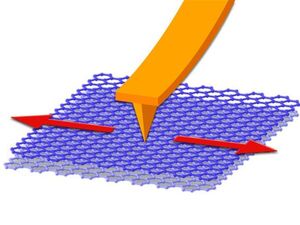
Humidity may be the key to super-lubricity 'switch'
"Sometimes friction is good, such as the friction between a road and a car's tires to prevent the vehicle from skidding. But sometimes friction is bad -- if you did not put oil in that very same car, there would be so much friction in the bearings of the engine that the car could not operate. A material state known as super-lubricity, where friction between two contacting surfaces nearly vanishes, is a phenomenon that materials researchers have studied for years due to the potential for reducing the energy cost and wear and tear on devices, two major drawbacks of friction. However, there are times when friction is needed within the same device, and the ability to turn super-lubricity on and off would be a boon for multiple practical engineering applications. Seong Kim, distinguished professor of chemical engineering and associate head of the Department of Chemical Engineering at Penn State, and Zhe Chen, a researcher with the State Key Laboratory of Fluid Power and Mechatronic Systems and the Department of Mechanical Engineering at Zhejiang University, proposed in a study in Applied Materials Today that this super-lubricity switch may be found in humidity. Specifically, water vapor and vapor in phenol, which is a family of organic compounds." [...]
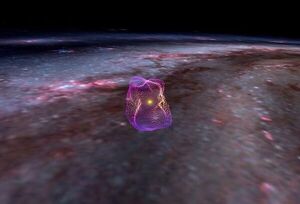
Cosmic Superbubble’s Magnetic Field Charted in 3D for the First Time
"Astronomers at the Center for Astrophysics | Harvard & Smithsonian (CfA) have unveiled a first-of-its-kind map that could help answer decades-old questions about the origins of stars and the influences of magnetic fields in the cosmos. The map reveals the likely magnetic field structure of the Local Bubble — a giant, 1,000-light-year-wide hollow in space surrounding our Sun. Like a hunk of Swiss cheese, our galaxy is full of these so-called superbubbles. The explosive supernova deaths of massive stars blow up these bubbles, and in the process, concentrate gas and dust — the fuel for making new stars — on the bubbles' outer surfaces. These thick surfaces accordingly serve as rich sites for subsequent star and planet formation. Scientists' overall understanding of superbubbles, however, remains incomplete." [...]
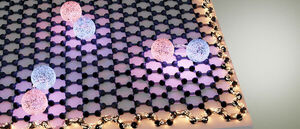
Milestone for light-driven electronics
"Within the framework of the Würzburg-Dresden Cluster of Excellence ct.qmat, excitons were generated in a topological insulator for the first time. A breakthrough in quantum research, based on material design from Würzburg. An international team of scientists collaborating within the Würzburg-Dresden Cluster of Excellence ct.qmat has achieved a breakthrough in quantum research – the first detection of excitons (electrically neutral quasiparticles) in a topological insulator. This discovery paves the way for a new generation of light-driven computer chips and quantum technologies. It was enabled thanks to smart material design in Würzburg, the birthplace of topological insulators. The findings have been published in the journal Nature Communications." [...]
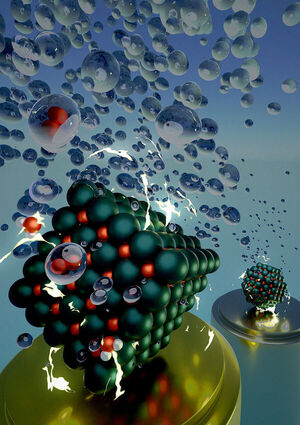
Cubes outperform spheres as catalyst particles
"The shape of nanoparticles is a decisive factor in their efficiency as catalysts for the production of green hydrogen. To date, nanoparticles as catalysts for green hydrogen have been like rowers in an eight: researchers could only measure their average performance, but couldn’t determine which one was the best. This has now changed following the development of a new method by the group led by Professor Kristina Tschulik, head of the Chair of Electrochemistry and Nanoscale Materials at Ruhr University Bochum, Germany. In collaboration with researchers from the University of Duisburg-Essen, she successfully proved that cube-shaped cobalt oxide nanoparticles are more efficient than spherical ones. This paves the way for the systematic design of cost-effective and efficient catalysts for green hydrogen. The researchers report in the journal Advanced Functional Materials from 3." [...]
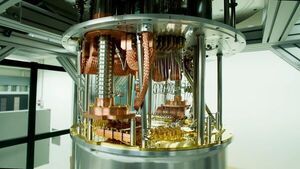
New Quantum Capabilities for Naval Warfare Centers
"The U.S. Naval Research Laboratory (NRL) and all 14 Naval Warfare Centers signed a memorandum of understanding Dec. 2 with the Air Force Research Laboratory’s (AFRL) Information Directorate to establish a conduit for exchange of technical expertise and the exploration of co-projects with a focus on creating useful quantum computing capabilities for the Department of Defense. The agreement gives Navy scientists and engineers access to AFRL’s IBM’s Quantum Hub (IBM-Q) processor, providing the ability to explore Navy-relevant problem sets focused on operations research, quantum machine learning, quantum simulation, classical simulation and crypto-analysis. “As we reimagine Naval Power, we know that quantum technologies are critical to the future battlespace,” said Rear Adm. Lorin Selby, Chief of Naval Research. “This collaboration will help ensure our warfighters have the tools they need for mission success.” Quantum computers offer the potential for faster and more efficient calculations, many of which fall under the realm of combinatorial optimization, machine learning, risk analysis, and chemistry, which are all areas highly pertinent to the development of technology critical for military use. To manage access to the IBM-Q Hub and facilitate advancements in quantum computing, NRL stood up a Naval Quantum Computing Program Office (QCPO) with Naval Information Warfare Center (NIWC) Pacific serving as the co-lead, and with other representation from Naval Warfare Center quantum subject matter experts." [...]

Catalyst for more efficient chemical production on the horizon
"An innovative technique is being developed by scientists that could allow Australia to lead the way in more sustainable manufacturing of fuels and chemicals. “We have developed new synthesizing approaches that enable 3D printing techniques to be employed to automatically and efficiently produce customised, single-atom catalysts (SACs),” said the University of Adelaide’s Professor Shizhang Qiao, Director, Centre for Materials in Energy and Catalysis who leads the team. “SACs can be tailored across a broad range of industrial applications. “Our innovative technique has the potential to be more cost-effective and simpler than current approaches.” The components of several precursors, including the affordable natural polymers and transition metal precursors, were mixed to form the printing ink. Afterwards, the ‘scaffold’ was printed directly by a 3D-printer. After the calcination and subsequent post-treatments, the isolated individual atom sites anchored on carbon supports were achieved." [...]
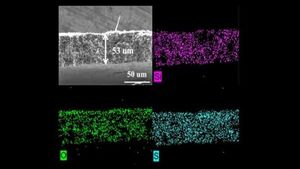
Lithium-sulfur batteries are one step closer to powering the future
"With a new design, lithium-sulfur batteries could reach their full potential. Batteries are everywhere in daily life, from cell phones and smart watches to the increasing number of electric vehicles. Most of these devices use well-known batteries">lithium-ion battery technology. And while lithium-ion batteries have come a long way since they were first introduced, they have some familiar drawbacks as well, such as short lifetimes, overheating and supply chain challenges for certain raw materials. Scientists at the U.S. Department of Energy's (DOE) Argonne National Laboratory are researching solutions to these issues by testing new materials in battery construction. One such material is sulfur." [...]
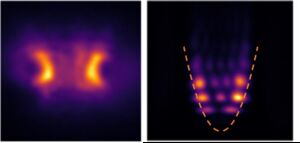
St Andrews scientists turn up the heat on physics phenomenon
"A ‘quantum harmonic oscillator’ – a structure that can control the location and energy of quantum particles which could, in future, be used to develop new technologies including OLEDs and miniature lasers – has been made at room temperature by researchers led by the University of St Andrews. The research, conducted in collaboration with scientists at Nanyang Technological University in Singapore and published in Nature Communications recently, used an organic semiconductor to produce polaritons, which show quantum states even at room temperature. Polaritons are quantum mixtures of light and matter that are made by combining excitations in a semiconductor material with photons, the fundamental particles that form light. To create polaritons, the researchers trapped light in a thin layer of an organic semiconductor (the kind of light-emitting material used in OLED smartphone displays) 100 times thinner than a single human hair, sandwiched between two highly reflective mirrors. Polaritons, like moisture in the air, can condense and form a type of liquid. The researchers corralled this quantum liquid within a pattern of laser beams to control its properties." [...]
Documentação
A documentação é parte essencial do processo de aprendizagem e a Internet além de artigos interessantes de explorar também tem alguma documentação em formato PDF interessante de ler. Todos os links aqui apresentados são para conteúdo disponibilizado livremente pelo editor do livro.
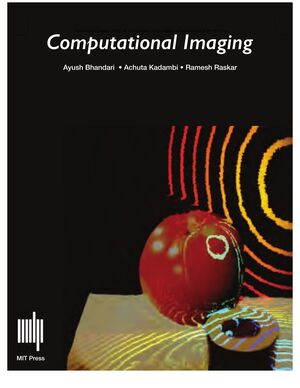
Computational Imaging Book
"A comprehensive and up-to-date textbook and reference for computational imaging. Computational imaging involves the joint design of imaging hardware and computer algorithms to create novel imaging systems with unprecedented capabilities. In recent years such capabilities include cameras that operate at a trillion frames per second, microscopes that can see small viruses long thought to be optically irresolvable, and telescopes that capture images of black holes. This text offers a comprehensive and up-to-date introduction to this rapidly growing field, a convergence of vision, graphics, signal processing, and optics. It can be used as an instructional resource for computer imaging courses and as a reference for professionals. The text first presents an imaging toolkit, including optics, image sensors, and illumination, and a computational toolkit, introducing modeling, mathematical tools, model-based inversion, data-driven inversion techniques, and hybrid inversion techniques." [...]
Projetos Maker
Diversos Projetos interessantes.
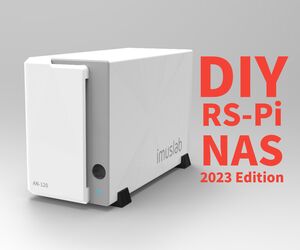
DIY Raspberry / Orange Pi NAS That Really Looks Like a NAS - 2023 Edition
"Back in 2018, I published an instructable sharing my build on my Raspberry Pi NAS that really looks like a NAS project. I have been using it for some time back in 2018 - 2019 and finally move on to a NUC as host as this is wasting too much space and I was doing frequent travel back in those time. During recent years, as Google started to limit their "unlimited" cloud storage for university, my student account also get affected. I started to move my files back to my NUC and all my available storage devices like PC and external hard disks. My NUC only got a single slot for 2.5 inch HDD and after using it for years, it finally started to run out of space. This is the reason why I urgently need another solution that is low cost, with more storage space with 3.5 inch HDD and small footprint." [...]

ESP07 Dev Board from Scratch
"I made a breadboard-friendly breakout board for the ESP07 board so it can be used for prototyping ESP8266-based projects. Hey, what's up, everyone? So here's something useful: a custom breakout board for using the ESP07 module for tinkering and testing. This Custom Board differs from commonly available ESP boards in that it has vertical header pins that allow it to be installed vertically on a breadboard rather than horizontally. This makes it easier to save pins, which is helpful while tinkering. The ESP07S Module is an ESP8266-based module with the same internals as regular ESP12S or F modules used in NODEMCU Boards." [...]

Pi Zero Bikecomputer
"An open-source bike computer based on Raspberry Pi Zero (W, WH, 2 W) with GPS and ANT+. Pi Zero Bikecomputer is a GPS and ANT+ bike computer based on Raspberry Pi Zero(W, WH, 2 W). This is the first DIY project in the world integrated with necessary hardwares and software for modern bike computer. It measures and records position(GPS), ANT+ sensor(speed/cadence/power) and I2C sensor(pressure/temperature/accelerometer, etc). It also displays these values, even maps and courses in real-time. In addition, it write out log into .fit format file." [...]
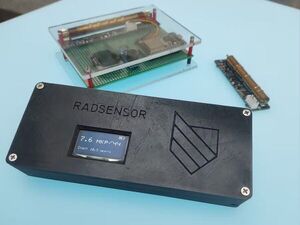
Portable personal DIY dosimeter
"RadSensor v1.0: Let’s assemble a portable personal dosimeter from ready-made components RadSensor v1.0 In an ever-changing world, a dosimeter is not only a way to satisfy curiosity and catch at least a few Sieverts, but also a way to detect very real threats: from checking the “intteresting old thing” from the grandfather’s garage, to tracking the radioactive background in the areas where nuclear power plants are located, from ensuring safety when going into abandoned places to monitoring global and local man-made disasters. We set ourselves a practical task - to assemble a cheap, functional and convenient dosimeter from ready-made components. Wemos D1 and the RadSens module (arduino dosimeter based on the Geiger tube SBM-20) will be used as the main elements. RadSensor (is the proud name of our detector) takes the best from previous projects, takes into account their mistakes and expands the functionality of the counter, in particular - increased battery life; - audio feedback functionality; - improved ergonomics and versatility of the case; - simplified and freed from “crafting”. DIY personal dosimeter Next, you will find a step-by-step instruction for assembling the device from purchasing components to code and testing. Purchase Plan (BOM) you'll find in "Things" section." [...]

Testing Servo Capes with the BeagleBone Black
"It is not dual core, it is the am335x supported BBB! Enjoy my take on the build and ideas revolving around the Servo Cape(s)! Hey You, Ha... I think the BBB is a nice board with a lot of features. With this build, we will build a Quadruped (almost). The almost part is b/c of my 3D Printer being below par on size...WIP." [...]
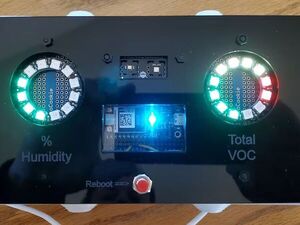
SignCompanyVOC
"This unit captures Humidity, Temperature, CO2 (ppm), and TVOC (ppb) and sends that data to an Adafruit dashboard. Prints shops are concerned about indoor humidity as it can affect the transfer of, and drying characteristics, of ink and the media it is being applied to.Another concern at any fabrication/production shop is the air quality the staff are subjected to during the workday. This unit captures Humidity, Temperature, CO2 (ppm), and TVOC (ppb) and sends that data to an Adafruit dashboard. The neopixel rings on the device itself show the level of Humidity and TVOC only, the two measurements that the client wants to know about. As the count of each rises, so too does the number and color of the neopixels for each category. TVOC counts that are safe for human exposure are color coded green, warning levels are in yellow, and danger levels are in red." [...]

Build DIY Soil Moisture Meter Using Arduino Nano
"One easy way to monitor the moisture in your soil is to build a DIY Soil Moisture Meter using an Arduino Nano. With this project, you can easily see when your plants need watering and adjust your watering schedule accordingly. Supplies To build a DIY soil moisture meter using an Arduino Nano, you will need the following materials: 1) Arduino Nano 2) TP-4056 Module 3) Capacitive Soil moisture sensor 4) Lithium Battery 5) MT 3608 Boost converter 6) SSD1306 Display 7) Jumper wires" [...]

Organic Finbonacci Clock
"People often ask me, where do you get all the time yo come up with those cool clocks. I respond with the wit that every clock adds time to my life. In fact is how bigger the clock how much more time we have. In the early times clocks were really big and people seem to have a lot of time. The smaller the clocks got, the fewer the time seemed that people experienced to have. With the coming of the atom clock, the smallest singular part with its characteristics, time went really short." [...]
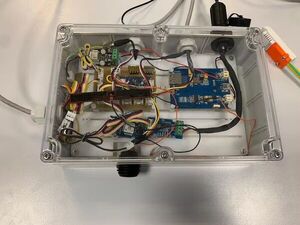
Hive Monitoring
"This project aims to monitor remotely the evolution of a bee colony, thanks to a connected system equipped with sensors of all kind. Story Since the end of the 90's, a phenomenon known as Colony Collapsse Disorder, among honey bees, has been observed. In addition, new weakening factors have appeared, such as vespa velutina (commonly called Asian hornets) and varroa (a parasite causing malformations). Climate change, the use of pesticides and the theft of hives do not help their case. This phenomenon also impacts us, because our survival depends on the survival of pollinating insects. As part of our second year of engineering degree at Polytech Sorbonne, in Electronics and Computer Science, and in collaboration with the Plaisir Village Animation association, we have created a connected system for a beehive monitoring." [...]

Gas Leakage Detector
"How to use MQ2 Gas Sensor Hey Guys, In this tutorial I'm going to show you How to use the MQ2 Gas Sensor in an easy way. The MQ-2 is a smoke and combustible gas sensor. It can detect flammable gas in a range of 300 - 10000ppm. Its most common use is domestic gas leakage alarms and detectors with a high sensitivity to propane and smoke. This type of smoke sensor is made of a tin oxide semiconductor gas sensing material. " [...]

Walk-Bot
"A Smart Navigation and Safety System for the visually challenged The Walk-Bot is a navigational device designed for the visually impaired. It is supposed to be worn around the waist of the user and is capable of detecting objects at any level of human movement in front of him/her. There are 2 ultrasonic sensors present on the device: one in the front and one at an angle of 45 degrees upwards. A third infrared sensor is placed at an angle of 45 degrees towards the bottom because the ultrasonic waves have a tendency to get reflected by flat surfaces at particular angles resulting in inaccurate measurements. The raw input from these sensors is then processed by the microprocessor using trigonometry to obtain distances 29.3% more accurately. Walk-Bot is equipped with a gyroscope(compass) which can detect slight changes in inclination of the device and compensate for such disruptions." [...]
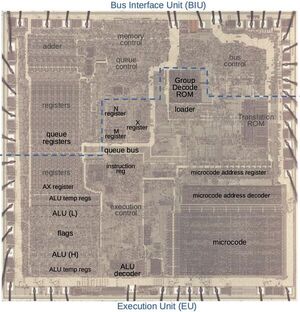
The 8086 processor's microcode pipeline from die analysis
"Intel introduced the 8086 microprocessor in 1978, and its influence still remains through the popular x86 architecture. The 8086 was a fairly complex microprocessor for its time, implementing instructions in microcode with pipelining to improve performance. This blog post explains the microcode operations for a particular instruction, "ADD immediate". As the 8086 documentation will tell you, this instruction takes four clock cycles to execute. But looking internally shows seven clock cycles of activity. How does the 8086 fit seven cycles of computation into four cycles?" [...]

COLOR MIXER Version 2
"A simple RGB Color Mixer for photography use, its powered by an Seeed XIAO M0 and uses three pots for controlling the colors. Hey there, guys. I have a colorful project for you called The COLOR MIXER Version 2, which is a homemade version of the RGB Box that is used in photography and cinematography As previously stated, this is Version 2 of the previously created COLOR MIXER Box project, which functions identically to this version but has a new form factor, a WS2811 IC with 5050 LEDs instead of WS2812B LEDs, and an inbuilt power source to make this setup fully wire-free and portable. The XIAO M0 Dev board drives it, and the SSD1306 OLED is used to display the RGB values. The cinematography uses "RGB box lights, " which are readily accessible commercially, to set the lighting in a variety of settings. This homemade RGB controller has three pots for selecting different colors (R, G, and B)." [...]

Reverse Geocache Box
"A gift box, locked from the inside, that will only open at a special location that can be set by the giver. When the button is pressed the box displays how far away they currently are. They must travel a few miles and check again to see if they are getting closer or further away from the destination! The receiver of the box only has so many tries to triangulate in on the special location. When they finally arrive at the correct location the box unlocks to present any gifts inside, a message is displayed and a special tune is played! Arduino Project Parts This can be built using pretty much any Atmel microcontroller including ATTiny85's if you only implement the LiquidCrystal_I2C, PWMServo, and SoftwareSerial that talks to the GPS module, and the GPS module itself." [...]

I made my own USB DOCTOR!!
"A lot of power meters available in market which delicately made to work with 5volt charger power. The maximum ratings of my commercial one is 7v at 2amps. Now I want to use this USB charger doctor with my fast charger but it is not compatible at all. That’s why designing of this DIY charger came into my mind. My fast charging adaptor goes upto a rating of 80watts. A voltage divider network is used to measure the voltage upto 20volts with a current rating of 5ampere." [...]
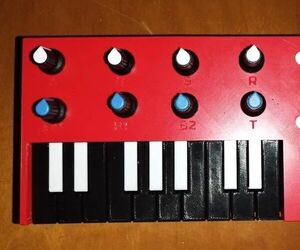
Arduino Synthesizer
"An Arduino Nano-based 3D printed synthesizer that produces a wide range of amazing sounds generated using FM synthesis technique and ADSR envelope control. Hardware components: - Arduino Nano R3 - x17 Tactile Switch, Top Actuated - x8 10k Potentiometer - Audio amplifier. We use a stereo one (PAM 8610, 2x15W) but a mono one is enough, because we only have one audio signal. - Speaker 5W - PCB Software: - Arduino IDE Hand Tools: - Soldering Iron - 3D Printer" [...]

Magnetic Levitation with ATtiny1614
"A simple magnetic levitation toy built using a ATtiny1614 microprocessor This is my build of Magnet Levitation with Arduino by fellow Hackster jsirgado. This version differs in the following ways: - Replaced Arduino Nano with ATtiny1614 microprocessor - Added a 3D printed rocker switch to adjust the levitation point - Created a replacement "base_cover.stl" that incorporates the 3D printed rocker switch and PCB support pillars. - Modified the "ufo.stl" to support two 15mm x 4mm round magnets" [...]
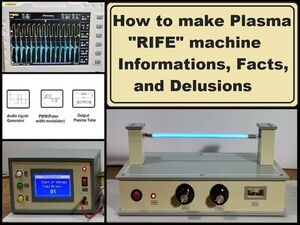
How to make Оriginal Plasma Rife Machine
"Detailed informations, facts, and delusions about Rife machines, and whether these devices really heal. Royal Raymond Rife was a scientist, inventor and medical researcher (1888-1971). He is known for his microscopes, which he claimed could observe live microorganisms but also by an electronic device constructed by him called the Rife Machine, which according to his claims, is capable of curing very serious and incurable diseases. R ife began using his new microscope to explore the behavior of microorganisms. He discovered that each microorganism has a own natural resonance frequency. According to their studies, subjecting the body to the above frequency from an external generator can cure the disease." [...]

Animated LED Sand
"Simulated Glowy Physics! These LEDs interact with motion and looks like they’re affect by gravity. An Adafruit LED matrix displays the LEDs as little grains of sand which are driven by sampling an accelerometer with an Adafruit Feather. The code, written by Phillip Burgess, simulates physics by calculating collisions and terminal velocity. We designed 3d printed enclosures to take advantage of sensor readings by allowing it teeter totter as well as a gimbal to create interesting simulations. " [...]
Secção Videos
Videos interessantes.
That's all Folks!




